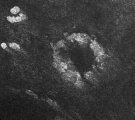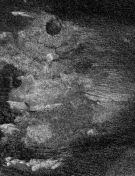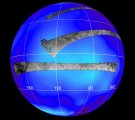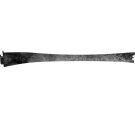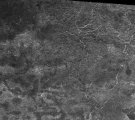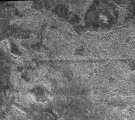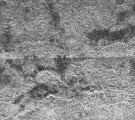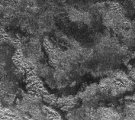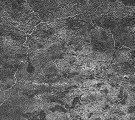Titan Flyby - April 2006
29 April 2006
Forty-two days after T12, Cassini returns to Titan for the fourteenth targeted flyby of Titan on Sunday, 30 April 2006 at 20:58:15 UTC. Cassini's closest approach to Saturn's largest satellite is at an altitude of 1855 kilometres above the surface at a speed of 6.0 kilometres per second.This encounter is set up with two manoeuvres: an apoapsis manoeuvre scheduled for 5 April, and a Titan approach manoeuvre, scheduled for 26 April. Titan-13 is an outbound flyby, with Saturn periapsis occurring (about two days before closest-approach) on 28 April. The navigation team expects to deliver the orbiter to within 30 km of the target altitude at a confidence of 99% (three sigma).
Science Activities
- Imaging Science Subsystem (ISS) - will observe particle properties, vertical distributions (~6 km/px, 0.6 Mbit/frame with 2x2 summing). ISS will also examine wind/cloud motions; (3-12 km/px, 3 images/timestep in CB1 filter to increase SNR), and search for and monitor lightning/aurora (High-resolution imaging, 50-200 m/px, special targets, emission angles < 45° prefer IR-polarizer (phase 45-110)).
- Cassini Plasma Spectrometer (CAPS) - will investigate large-scale and distant aspects of the Titan interaction with Saturn's Magnetosphere by observing during the entire period around an encounter from 10 to 25 RS.
- Composite Infrared Spectrometer (CIRS) -will obtain information on trace constituents in Titan's stratosphere. Integrate on limb at two positions. Obtain information on CO, HCN, CH4. Integrate on disk at air mass 1.5-2.0. Pointing: -Y to Titan, X away from Sun.
- Ultraviolet Imaging Spectrometer (UVIS) - will observe the star Beta Ori as it becomes occulted by Titan's atmosphere.
- Visible and Infrared Mapping Spectrometer (VIMS) - will obtain new high resolution images that will help understand Titan's geology and the fate of CH4. VIMS will also search for and study the evolution of mid-latitude clouds, and search for lightning and hot spots.
- Magnetometer (MAG) - will investigate large-scale and distant aspects of the Titan interaction by observing during the entire period around an encounter from 10 to 25 RS. (23TI (T13))T13 is an equatorial wake flyby under plasma conditions near Saturnian local midnight with 1852 km altitude at closest approach. Thus it is very similar to T13 even according to local time.
- Magnetospheric Imaging Instrument (MIMI) - will investigate micro-scale and near aspects of the Titan interaction by observing during about one hour period around an encounter. With -Y pointed toward Titan, when within 30 minutes of the targeted flyby, optimise secondary axis for co-rotation flow as close to the S/C -X, ± Z plane as works with the other constraints on Pointing. Also, measure Titan exosphere/magnetosphere interaction by imaging in ENA with INCA (when Sun is not in INCA FOV).
- Ion and Neutral Mass Spectrometer (INMS) - will obtain data regarding Titan's atmospheric and ionospheric composition and thermal structure. INMS will also observe the magnetospheric/ionospheric interaction.
- Radio and Plasma Wave Spectrometer (RPWS) - will perform observations in the immediate vicinity of Titan, including thermal plasma density and temperature measurements with the Langmuir probe, search for lightning and other radio emissions, characterization of plasma wave spectrum, search for evidence of pickup ions. Langmuir probe within 90° of spacecraft ram at closest approach, co-rotational ram outside of ± 15 minutes.
- RADAR - will perform low and high resolution SAR (Synthetic Aperture RADAR) imaging of Titan's surface. Additionally, RADAR will collect Altimetry, Radiometry, and Scatterometry Data. SAR swath cuts right across Xanadu, as well as some areas where there exists good ISS/VIMS hires coverage, enabling useful comparative studies.
Observation Results
Cassini Instrument: Synthetic Aperture Radar (SAR)
Last Update: 1 September 2019

